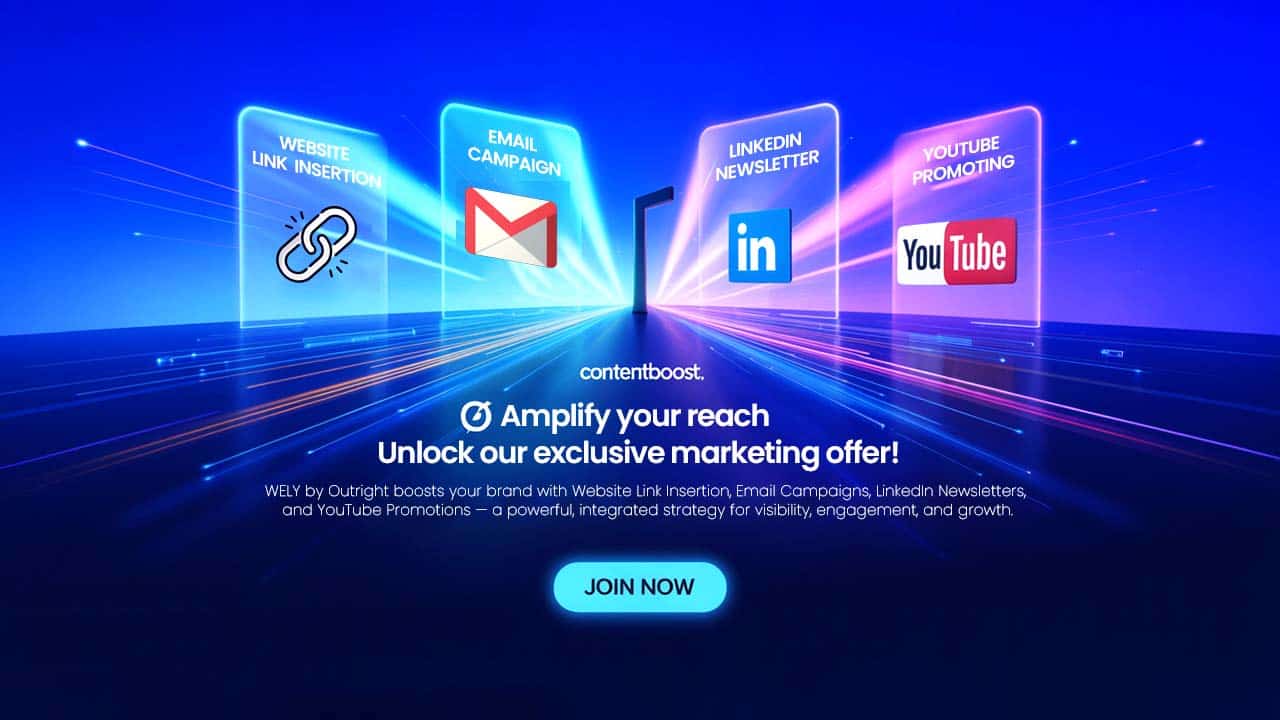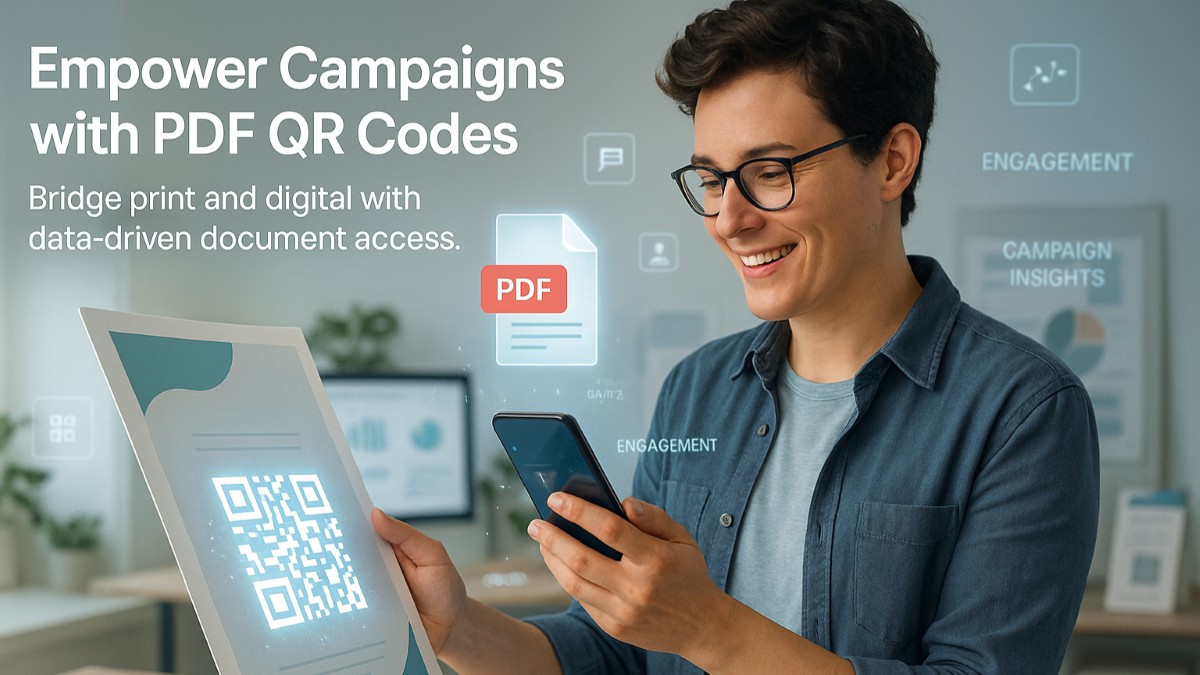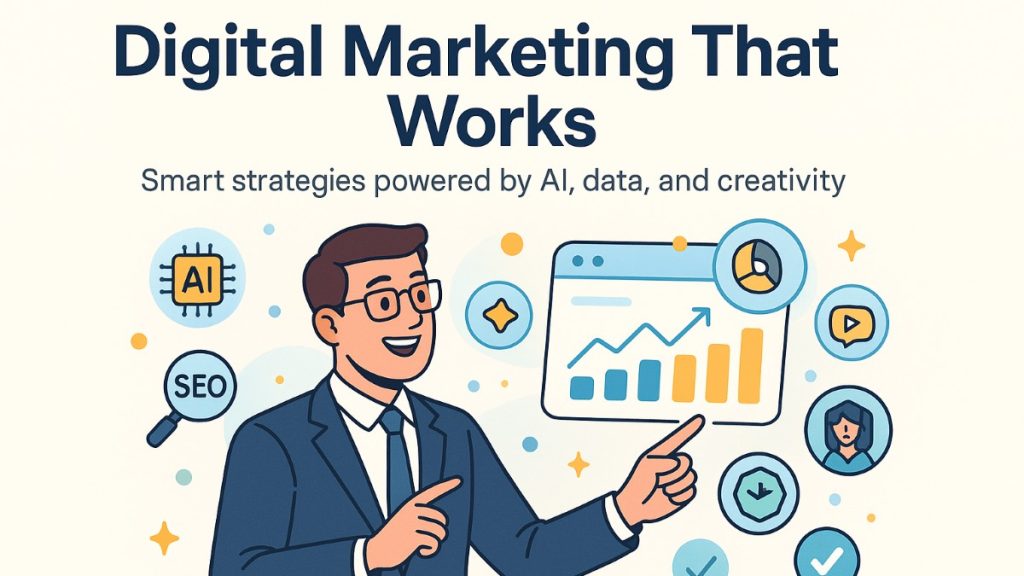In marketing, accessibility is everything—customers expect instant access to information. Yet static documents like brochures, menus, or whitepapers often get buried in cluttered inboxes or become ineffective due to outdated
In marketing, accessibility is everything—customers expect instant access to information. Yet static documents like brochures, menus, or whitepapers often get buried in cluttered inboxes or become ineffective due to outdated links. That’s where QR codes transform the experience. With a PDF QR code generator, businesses can connect documents directly to campaigns—bridging print and digital seamlessly and ensuring content is both accessible and measurable.
The Growing Role of QR Codes in Marketing Campaigns
QR codes have evolved from niche tools used in logistics to indispensable assets in consumer engagement. During the pandemic, their use dramatically increased, appearing on menus, tickets, pamphlets, and more. This made them a natural fit for omnichannel strategies—helping marketers integrate campaigns across physical and digital experiences smoothly.
What makes QR codes so powerful is their simplicity. With one scan, customers can bypass clunky search processes or email attachments. For marketers, this not only improves customer experience but also creates a trackable, interactive touchpoint that fits neatly into wider QR code marketing strategies.
Why PDF Files Are Perfect for QR Code Integration
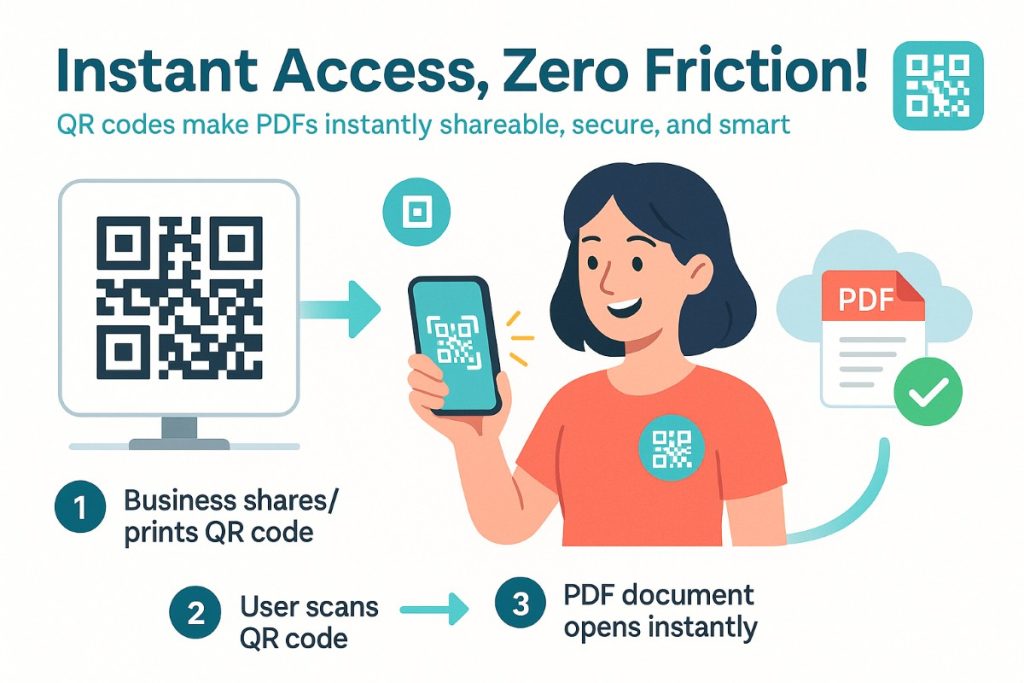
PDFs are universally trusted document formats for brochures, contracts, menus, and guides. They are portable, consistent, and easy to share across devices. By embedding these documents behind QR codes, brands eliminate friction—customers no longer need to locate an email attachment or download a bulky file. Instead, scanning a code grants instant access, merging the reliability of PDFs with the immediacy of mobile marketing.
For industries like finance or healthcare, where accuracy and consistency matter, PDFs are ideal. A bank can use a QR code on direct mail to link customers to an updated loan application PDF. A hospital can place QR codes on appointment letters, leading patients to a PDF with pre-surgery instructions. These are small touches, but they improve both accessibility and customer confidence.
Practical Use Cases for PDF QR Codes in Campaigns
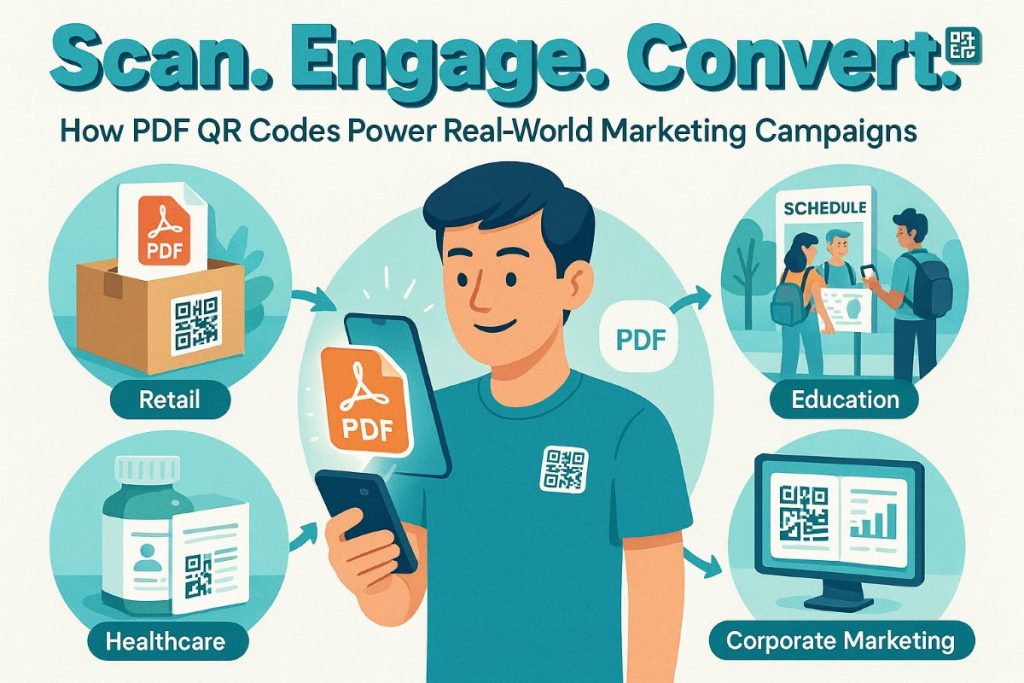
The applications of PDF QR codes span industries:
- Retail: QR codes on your product packaging that link straight to your user manual, seasonal catalogue or more. Think of a furniture retailer—your customer scans a code on the box of their flat pack and immediately downloads the self-assembly manual, helping reduce customer support calls.
- Education: Attach a flyer to your syllabus or reading list as a PDF (perfect while students are on the go). Universities could use it too by sticking a QR code to their Open Day poster, sending a PDF for parents and students to download, including a map, event schedule and FAQs.
- Healthcare: Appointment letters with QR codes linking to your patient instructions or forms. Pharmacies that link QR codes on pharmaceutical packaging to the official dosage information. Your customer will always have the correct information.
- Events: Posters that scan you to the event programme, schedule and map. Conference and event organisers more frequently offer a QR code that links to a sample brochure, so you don’t have to carry around the weight of tonnes of paper all day.
- Corporate Marketing: Print ad linking to your case study, whitepaper or more, without relying on an old school URL. B2B companies can find out how many senior decision makers actually scanned the QR code in their conference handout to download the whitepaper, and then follow up with qualified outreach to convert.
Adobe highlights how QR codes enhance engagement and conversion by “facilitating data collection” and improving customer experience—making PDF integration both practical and strategic. Retailers, educators, and event organizers can all benefit from linking PDFs via QR codes.
👉 If you’re unsure how to start, here’s a helpful guide to create a QR code instantly.
Data-Driven Insights from Trackable QR Codes
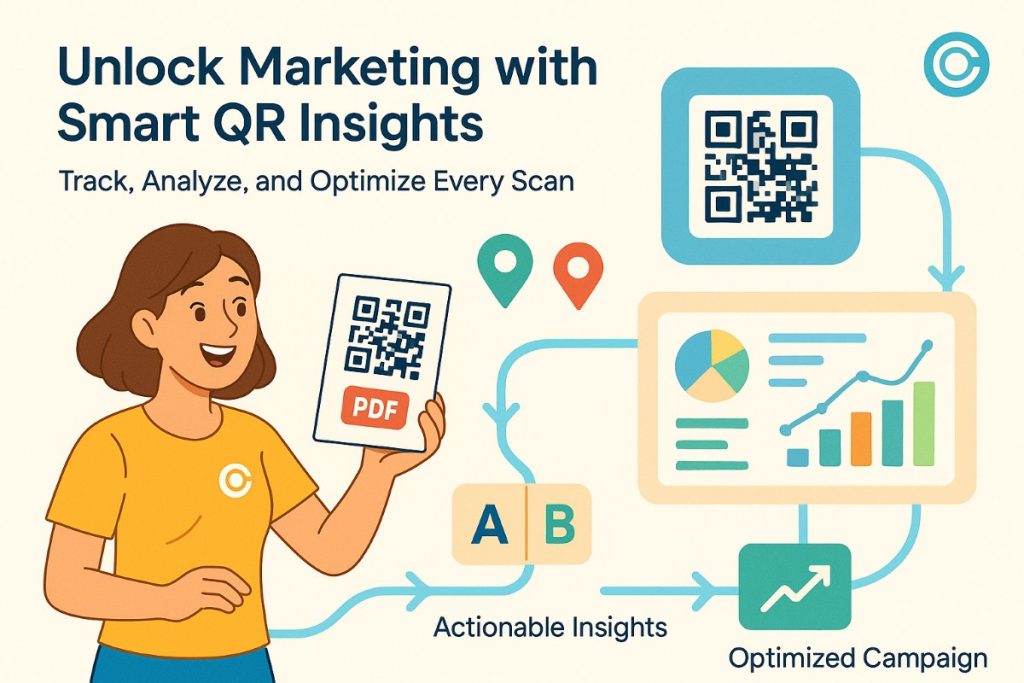
- Using dynamic PDF QR codes, businesses gain powerful analytics.
- Data on when, where, and what scanners are scanning.
- A/B tests on different PDF assets and placements.
- The ability to adjust strategies on-the-fly based on user actions.
For instance, an e-commerce brand can hand out flyers with QR codes that resolve to a PDF. The brand can create one QR code for each city. When the scan data rolls in, the brand can see which city is responding the most. This information can influence how the brand reallocates its marketing dollars.
A similar use case is available for digital marketers wanting to run ads in different languages. Each PDF can still be scanned, and the aggregate data will be collected for marketing purposes. Multilingual campaigns can also make use of QR codes. Marketers can create a single QR code that will direct users to a PDF in one of multiple languages, based on the user’s device settings, while still gathering scan data.
Research from Impact finds that data-centric campaigns are 23X more likely to acquire customers. When PDF assets are shared through QR code deliverability, every scan isn’t just an engagement, but also a data point. With analytics supporting each interaction, marketers can inform ROI and improve results over time.
Looking Ahead — PDF QR Codes in the Future of Marketing
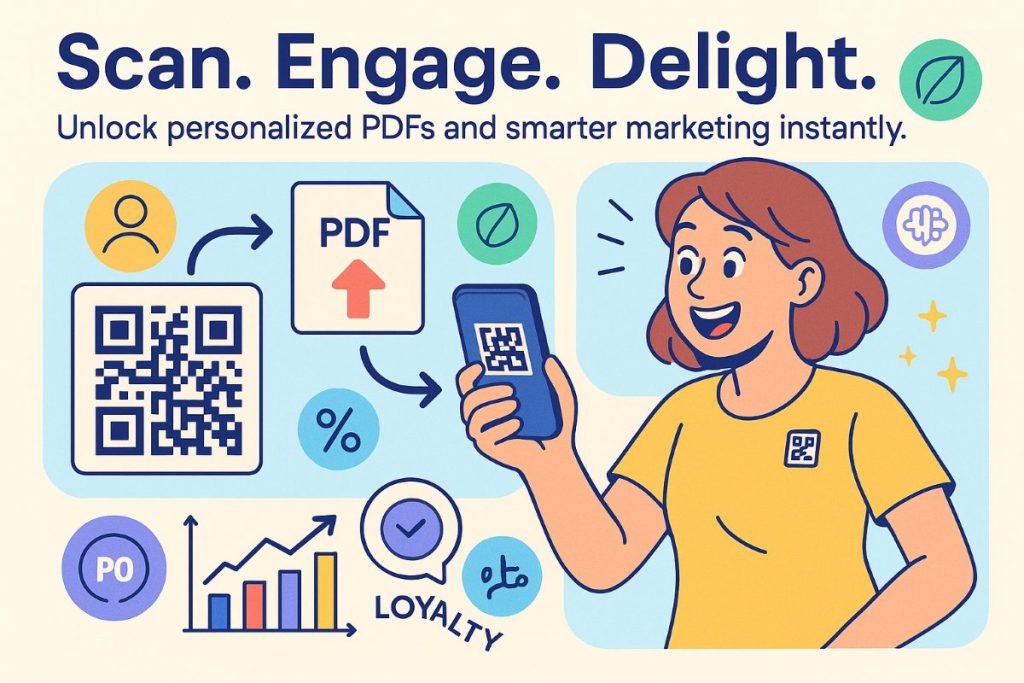
The future shines even brighter for QR-linked PDFs:
- Personalisation: Imagine triggering a unique PDF based on who scans a QR code. Say a loyal customer receives a more aggressive offer, or someone in a cold region sees the winter catalogue. The possibilities are vast.
- Sustainability: As a play on green marketing, cut printed collateral by going with reusable QR-coded PDFs. Many larger events are starting to replace printed brochures with downloadable ones. Paper saved this way can amount to thousands of printed pages.
- AI-powered Analytics: Combine scan data with customer journey data to potentially unlock additional insights. For example, the type of PDF shoppers are likely to be scanning at each particular venue.
- Integration with Loyalty Systems: Scanning the QR code could trigger not only a PDF download but also allocate added points to loyalty gamification and incentivise brand engagement and consumer connection through PDF delivery.
Taken together, these trends and advancements suggest that QR codes to PDFs are not just convenience tools — they are an integral part of the marketing playbook, combining security, convenience, relevance, sustainability and output measurement.
Conclusion
PDFs serve as the current baseline for document integrity and quality; connecting tangible objects with virtual PDFs through a PDF QR code and a smartphone changes the way a consumer can connect with this content. By doing so, a brand has the power to link a print piece to a webpage in a fluid, trackable, and secure fashion, with the added benefit of collecting data that can be used to enhance future efforts.
By using PDF QR codes, brands can provide more than simple shortcuts; they will be optimising efforts from a number of perspectives, enhancing engagement, conversions, and trust. Forward-thinking brands focused on building consumer experiences can get a head start by leveraging data to construct the marketing ecosystem of the future.
Respond to this article with emojis
